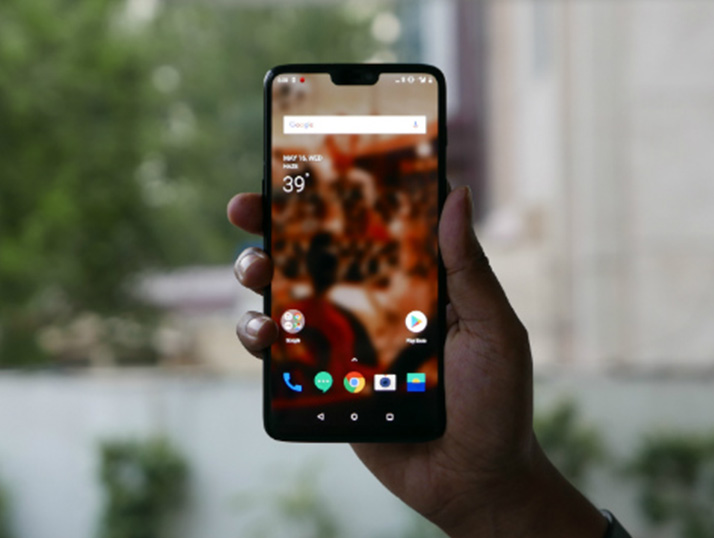There’s some change in positioning the elements. The dual camera unit, for one, is now vertically aligned and placed right above the fingerprint sensor, which ditches the old circular design for a rounded rectangle. The alert slider has moved from the left edge to the right, much to my detriment as my left-handed self now finds it quite difficult to use it promptly. Right-handed users will find it to be a delight though.
Apart from the glass design, another big change is the notch on top of the display. The 6.28-inch panel on top is the biggest panel seen on a OnePlus device and the company has managed to accomplish it without tampering with the size of the body. Because of the notch, the display stretches almost to the top. It can be argued that the OnePlus 6 becomes another me-too phone when it comes to using the display cutout. The notch is ugly. It's a stopgap solution to making a fully immersive display, and apart from being something new, it's doesn't really serve a purpose.but the notch doesn't come in the way of the content either. The bezels on the sides and the lower chin are even thinner than last time, and everything combined, you get a screen-to-body ratio of 84%. That makes the panel look a lot more immersive. But more than that, for the limited time I used the phone, the display felt much brighter than last year’s. It still relies on the AMOLED panel of full HD+ resolution, but the notch allows for a 19:9 aspect ratio.
The OnePlus 6 display notch in all its glory
The new aspect ratio doesn’t mess with the content though. The extra space is actually used to make sure the status bar does not come in the way. When a video is playing, the notch is subtly disguised by blacking out that part of the screen. The notch does not seem to come in the way of things at all. But the asymmetry might be bothersome for some.
Once you get past the new design, the OnePlus 6 will feel a lot familiar. It continues to feel super smooth and slick when operating. It’s too early to say whether there has been a sizeable improvement in performance because of the new chipset, but it does feel just as smooth and fast as its predecessor.
We also haven’t tested the camera out intensively to pass a judgement. The dual camera implementation is still the same, but the hardware has been upgraded. The phone now relies on a 16-megapixel IMX 519 sensor with a pixel pitch of 1.22um and f/1.7 aperture, and a 20-megapixel IMX 376K sensor with a pixel pitch of 1.0um and f/1.7 aperture. OnePlus claimed there’s OIS in the camera. It still uses the 16-megapixel + 20-megapixel camera setup. The 20-megapixel sensor is only used when the light is dim. And thanks to OIS, it should perform even better in low-light. There’s a 16-megapixel camera up front which OnePlus announced with receive the ability to take portrait selfies after an update. It’s certainly feature rich and going by the past records of OnePlus devices, I’m looking forward to taking the camera out for a spin.
All said and done, it’s still difficult to say whether this indeed is the flagship killer. Yes, it packs all the latest top-of-the-line hardware, comes in a stunning new design with meticulous attention to detail, all at a price that will put premium flagships to shame. There will be some compromises for sure (a lack of IP rating, less richer display), but all that is expected to keep the price from soaring. One thing’s for sure — Everyone who dreams of owning a reliable flagship but doesn’t have the budget for it will surely keep the OnePlus 6 in their mind. Unless, the flagship-killer segment gets another incumbent soon.




